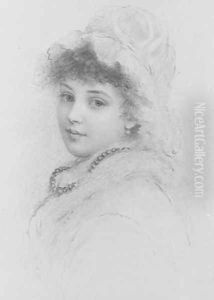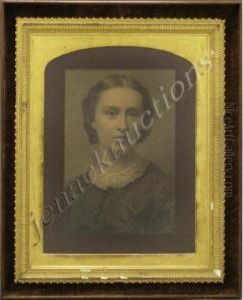Samuel Worcester Rowse Paintings
Samuel Worcester Rowse was an American artist, known primarily for his portraits and illustrations. Born on January 2, 1822, in Maine, Rowse spent most of his early life in the northeastern United States. He developed an interest in art at a young age and pursued his passion despite the limited opportunities for formal art education in his home state.
In the 1840s, Rowse moved to Boston, which was becoming a hub for artists and intellectuals. He became part of a community that included luminaries such as Henry Wadsworth Longfellow and Oliver Wendell Holmes. It was during this period that Rowse honed his skills as a portraitist, capturing the likenesses of many notable figures of his time. His style was characterized by a focus on realism and attention to detail, attributes that made his work popular among his contemporaries.
Rowse is also remembered for his association with the transcendentalist movement, which had a significant presence in New England. He was friends with transcendentalist leader Ralph Waldo Emerson, who also became one of his portrait subjects. This intellectual circle influenced Rowse's approach to art, encouraging a deeper contemplation of the spiritual aspects of his subjects rather than just their physical appearance.
Beyond portraiture, Rowse was an accomplished illustrator. His drawings and illustrations appeared in various publications, including books and periodicals. He had a particular talent for lithography, a printing process that allowed his illustrations to be widely distributed. Despite his success, Rowse lived a relatively modest life and often struggled financially due to the inconsistent nature of artistic patronage at the time.
Samuel Worcester Rowse never married and remained somewhat reclusive in his later years. He continued to work on his art, although he never achieved the level of fame or financial security that some of his peers enjoyed. He passed away on April 2, 1901, in Cambridge, Massachusetts. His legacy, while not as prominent as that of some other American artists of the 19th century, is preserved in the portraits and illustrations that offer a glimpse into the cultural and intellectual milieu of his era.

